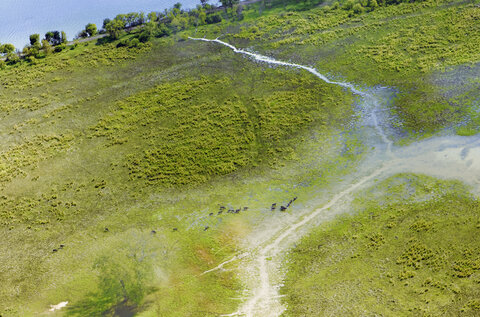What's the cheapest method of tsetse control?

There is no single cheapest method of tsetse control, but where the plan is to control tsetse over an area of about 1000 square kilometres the cheapest practical option will probably involve bait technologies: targets, traps, insecticide-treated cattle or some combination of the three.
Large-scale (~10,000 square kilometres) ground or aerial spraying may be highly cost-effective but is unlikely to be practised except where there is a strong case for government as distinct from private involvement, and government is able and willing to take this on. It will also need to be repeated at intervals.
The Sterile Insect Technique (SIT) holds out some promise for the future eradication of tsetse and trypansomiasis, but is as yet unproven on any large scale. In any case, it will rely on other techniques to bring tsetse populations down to low levels before it can be implemented.
Where area-wide tsetse control is not practical (e.g. the cattle to be protected are widely scattered, and the entire area is at risk of reinfestation) there may be scope for methods which prevent tsetse biting individual cattle, for example repellents including smoke and netted cattle enclosures. These areas are currently being researched: they may be particularly cost-effective in dairy systems where there is a high value on cattle and their uniterrupted milk supply.
For control of medium-sized areas, targets and insecticide-treated cattle each have advantages and disadvantages relative to the other (for more information click here). The choice of targets, insecticide-treated cattle or a combination will depend on many factors, including the size and shape of the area for control, cattle population densities, the presence of alternative hosts for tsetse, the existence of sub-areas not used by cattle, and risks of re-infestation. The cheapest options can be derived from these parameters by the "Tsetse Plan" module within this website.
For the control of riverine tsetse species an economic analysis conducted in Uganda showed that in a control operation covering 250km2, the cost of control was $85/km2 (Shaw et al 2015). This is considerably cheaper than ground spraying, aerial spraying and the use of SIT.
At present, community-based programmes to control tsetse typically take place over relatively small areas of about 1000 square kilometres, most of which border other areas where tsetse are present and uncontrolled. They therefore face a constant risk of reinfestation, given the distances tsetse can fly (for more information click here)
In most area-wide control programmes, therefore, there will be a need for continued control for the foreseeable future, until such time that much larger contiguous areas are free of tsetse.
References
Shaw, A.P.M., Tirados, I., Mangwieo, C.T.N., Esterhuizen, J., Lehane, M.J., Torr, S.J. and Kovacic, V. (2015). Costs of using “tiny targets” to control Glossina fuscipes fuscipes, a vector of Gambiense sleeping sickness in Arua district of Uganda. PlosNTD.